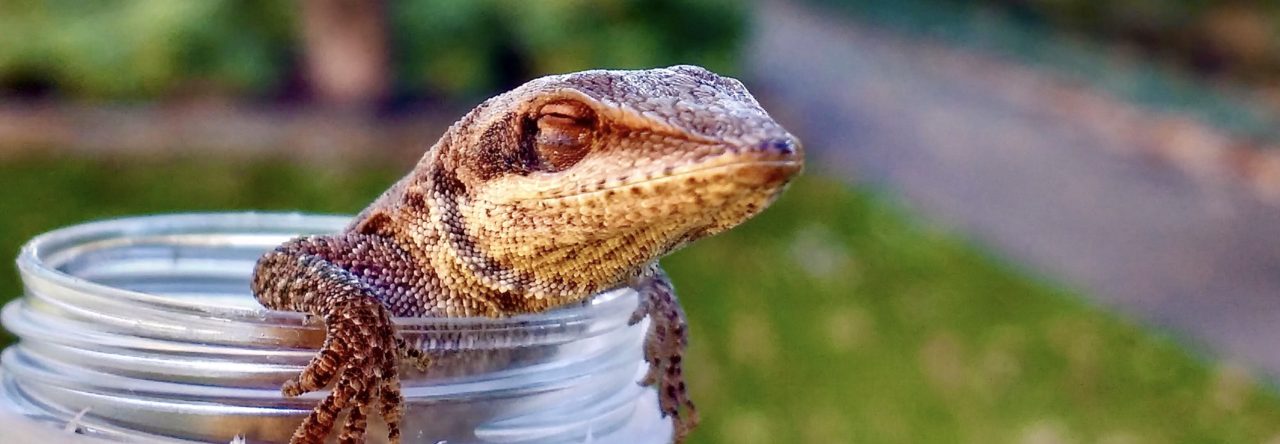Michael Price, Special to San Angelo Standard-TimesPublished 6:00 p.m. CT Dec. 23, 2017
Living in the day and age where memes on social media are the prevailing means of communication does have a FEW benefits. I can almost always count on having a good laugh daily at something someone has posted.
Just the other day, I saw a meme that stated, “I was not born in Texas, but I got here as fast as I could!” As a naturalist, all I could think about when I saw this posted was one particular species of lizard that has found its way here, and that species is the brown anole.
The brown anole (Anolis sagrei) is one of two species of anoles that currently reside in Texas, but this species is not native to this state. First established near Houston in the 1970’s, this species was known only from areas around Houston, San Antonio and Brownsville as late as the turn of the century.
However, now it can be seen in and among most metro areas within an imaginary triangle that pinnacles in the DFW area, east of I-35 and west of I-45. It has only recently been observed (2016) in the Metroplex, and there have not been enough observations to verify whether there is a breeding population there or not. Even more recently, a smattering of individuals had been reported from a nursery in the city limits of Midland and these observations have been verified.
Originally native to the Bahamas and Cuba, this species has been introduced and is thriving in areas outside of Texas as well. It is arguably the most common lizard observed throughout the southern 2/3 of Florida, and it can also be seen throughout the eastern seaboard of Mexico.
The habitats that this invasive lizard prefers are settings in densely vegetated areas. Although occasional specimens are discovered basking and foraging in short shrubs and trees, the vast majority of sightings are of individuals in terrestrial settings. It is the propensity for living among ornamental plants and shrubs that has enabled this species to thrive in the warmer climates outside of its natural range. Therefore, many Brown Anoles are observed living around landscaped human habitations such as houses and even businesses.
The brown anole is among the most plainly colored and yet most intricately patterned lacertilian species in the United States. Unlike the native green anole (which can vary in coloration from green to tan to brown), this anole is always a shade of brown. The scales on the back are small and granular in appearance and texture, and females are often plainly patterned, adorned only with a light stripe that runs lengthwise down the spine. Males on the other hand are patterned with an intricate array of lightly outlined dark wedges and blotches along the spine.
Both species have varying amounts of dark striping that extends behind the eyes. Males have a brightly colored dewlap that, when extended, is dark red. The limbs are long, and are often colored patterned with dark stripes or bands. The head is not nearly as elongated like the green anole and is not noticeably separated from the body, and the tail, which is colored like the back, is about one-half of the 8-inch total length.
Brown anoles, like other lizard species, are “cold-blooded”, or ectothermic. This means that it does not generate heat from the inside of their body, as mammals and birds do, but rather is dependent on outside sources for heating and cooling. It is active during the early mornings and late afternoons from early April to October, and like many other reptile species it avoids the hottest part of the day by resting in shaded areas. However, the fact that it resides primarily in tropical areas, it is often active throughout the year.
This species of lizard is an opportunistic carnivore, feeding primarily on small insects such as moths, butterflies, crickets, grasshoppers, beetles, and the like.
The brown anole is oviparous, which is a fancy way of saying that it lays eggs. During the breeding season, which typically begins in early spring and extends into late summer, males will attempt to attract females by extending his bright red dewlap (a flap of skin underneath the chin) while bobbing his head up and down in a “push-up” manner.
Following successful copulations, the female will begin to lay clutches of a single egg. By laying an egg about every two weeks, a female can lay as many as 12 eggs in a season. These eggs are laid in areas of high humidity, and typically will hatch in about five weeks. The two-inch long hatchlings are smaller imitations of the female, and are capable of fending for themselves immediately.
This lizard species is a gregarious basker and will often allow people to get rather close as it relies upon its coloration for protection. However, once it feels an intruder has approached too close for comfort, it will quickly dart for cover among the leaf litter.
Michael Price is owner of Wild About Texas, an educational company that specializes in venomous animal safety training, environmental consultations and ecotourism. Contact him at wildabouttexas@gmail.com.











